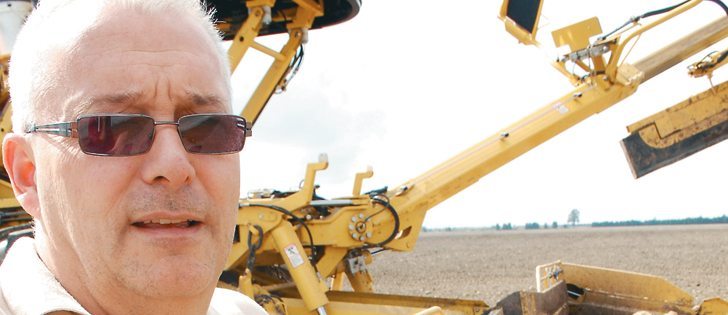ATLANTA – Fieldwork has been a solitary task since oxen first replaced the spouse on the plow.
The step from automated guidance and steering to automated operation may change that and result in fewer lone farmers in the field.
The first glimpse of what autonomous machines might look like in the field came in Soviet propaganda films during the Cold War: driverless tractors pulling drills and each running adjacent to its neighbour.
These were faked, but the futuristic look at farming turned out to be an accurate portrayal of what is coming to pass.
Read Also

Soybean market still figuring out implications of China-U.S. pact
Soybean futures had a muted reaction to the U.S. trade deal with China as the market tries to figure out the nuances of the deal.
John Deere, which has previewed its autonomous tractors for more than a decade, markets a military version of its Gator that can follow a path and avoid soldiers and other obstacles while walking point or returning wounded to base.
The first of the company’s drive-by-wire, 8-series Deere tractors have come off the assembly line at its plant in Waterloo, Iowa, in the past few weeks.
While they aren’t autonomous yet, the technology behind the concept is becoming standard in modern farm machinery.
Agco used Atlanta’s AgConnect farm machinery show earlier this month to debut its new business relationship with Japanese guidance electronics company Topcon.
The collaboration combines Agco’s machinery control systems with Topcon’s guidance tools to hand off basic farm machinery operations to the machines.
Producers need to map the land and specify the work locations and functions. After that, the machines can handle the rest.
“Knowing when to stop is one of the critical points,” said Rhett Schildroth of Topcon’s precision agriculture division in Adelaide, Australia.
“We are pretty sure we have that one.”
Schildroth said farm equipment is already mostly automated, and telemetric technology is available that can send data from nearly all operations to a farm office or mobile computer.
As a result, autonomous operation is only a small step away from reality.
Topcon’s technology marries guidance, 3D mapping, wireless communication, the machine’s electronics and cameras.
“For Western Canada, like parts of Australia where fields are large, farmers might want to bring two seeding rigs to the field, drive one and have a second unit running unmanned.”
He said other opportunities include tractors hauling grain carts from the combine to the bin.
“The (unmanned) unit comes up to the combine and takes the load on the go and returns to the bin site, where people unload it and send it back again. It knows where to go and what to avoid along the way.”
The latest in equipment design from major manufacturers will turn over the steering and speed control of combines and tractors with grain carts to guidance systems.
“With skilled labour being short, it’s easy to see that if you can put those people to work doing the complex tasks, you become more efficient in more ways than just saving a salary or two,” he said.
The Topcon-Agco system relies on a light detection and ranging unit to send signals that bounce back from nearby objects, continuously creating a three dimensional map of the environment.
“It includes differences in crop height, a washout, livestock, people, trucks. If it shows up in the machine’s path, it will stop or react as it’s programmed to,” he said.
Schildroth said the company had to work out all the fail-safe aspects of the system to ensure it wouldn’t put people or equipment at risk.
The technology was proven with Topcon’s integrated position system, IP-S2, which is the same type of technology that creates Google’s Street-View maps and examines and maps bridges and other large structures.
The company used the system to send unmanned vans across Europe and China and a Toyota Prius around San Francisco.
“It’s going to be guiding farm equipment in fields in the next one to five years,” he said about its commercial availability.
“Producers hear about it, the next thing they say is that they want it sooner rather than later,” he said.
To view a video of the technology, visit www.youtube.com/watch?v=w9kslIloQrs.














